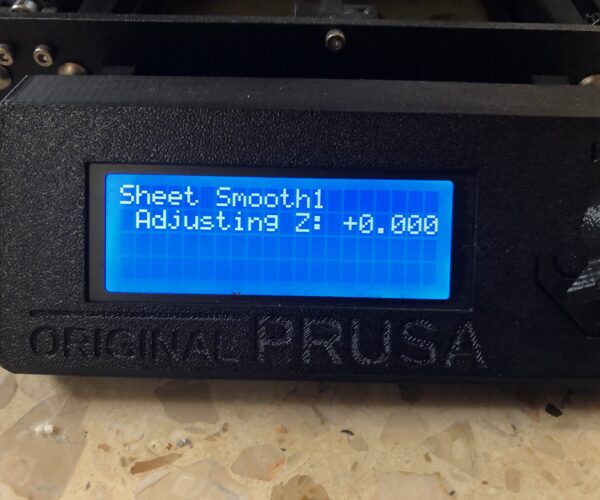Unusual Problem with First Layer Calibration
After changing PLA Filament, wanted to run a First Layer Calibration again, to get a perfect first layer.
During 9 Point Calibration, when the pronter got to point 5 or 6 it started making Hammering Noises and automatically started a Z Axis Check in witch it still made noises when it got to the end.
I'm after doing all of these: self test, XYZ calibration again, updating to firmware 3.8.1 (which didn't help), resetting to factory settings and running the wizard again.
The First Layer Calibration is set to +0.0000 and won't allow to adjust to the 'Plus' side, only 'Minus'. I get a really bad first layer without the ability to change it. When I start a new print, the same problem with the 'Grinding sound' Recurs.
After the bad first layer Cal. (which had the extruder very high above the plate) I started a print and the whole error occured again with grinding sounds and errors....
Any ideas how to fix this?
Maybe Downgrading the firmware version or reinstalling?
RE: Unusual Problem with First Layer Calibration
yoav1122,
First, turn on 7x7 mesh bed leveling in the printer settings, you will be happier with the results in the long run.
The live-Z value should NEVER be positive only negative. If your nozzle is too low when you begin the live-Z calibration and must be raised then you need to redo the PINDA adjustment step in the assembly manual to get the PINDA sensor set to an appropriate height.
If you are getting grinding noises and such during axis movement the first thing to check, with power off, is the motion of the x and y-axes. They should move freely by hand with no significant change in effort throughout the entire travel (you did grease your bearings during assembly right?). If the movement is not free in the x direction you may have binding due to the bearing cover on the extruder back being over tightened. Loosen the cover screws slightly and check movement again. If the problem is in y you may have a u-bolt too tight causing bearing deformation.
Let us know what you find.
Regards,
Steve
